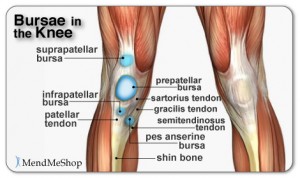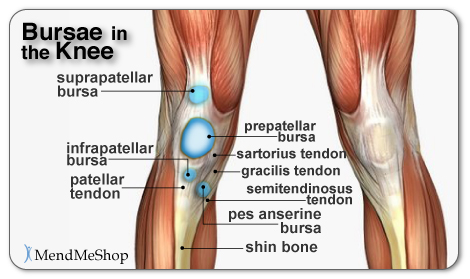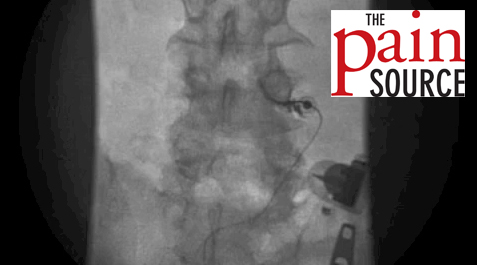By Chris Faubel, MD —

PM R. 2010 Aug;2(8):732-739. Epub 2010 Jul 3.
Accuracy of Ultrasound-Guided versus Unguided Pes Anserinus Bursa Injections.
Finnoff JT, Nutz DJ, Henning PT, Hollman JH, Smith J.
Physical Medicine and Rehabilitation, Mayo Clinic College of Medicine, Mayo Clinic Sports Medicine Center, 200 First St SW, Rochester, MN 55905(1).
Get the abstract here
Summary of study:
- Single-blinded, prospective study — physicians obviously knew if they were using ultrasound or not
- 24 adult cadaveric lower extremity specimens were used
- A single physician performed all the injections — therefore no worry about inter-rater variability
- 12 US-guided and 12 unguided injections of colored liquid latex were performed
- Separate, blinded investigators then dissected the specimens to evaluate the accuracy of each
- Outcomes: The injections were graded:
- Accurate (all injectate contained within the bursa)
- Accurate with overflow (injectate in bursa, but also in surrounding tissue)
- Inaccurate (injectate NOT within the bursa)
- Equipment used
- Philips iU22 Ultrasound machine
- 17.5 MHz linear array transducer with a 38-mm footprint
- Standard US gel
- 25-gauge, 38mm (1.5 inch) needle
- Colored latex solution diluted by 50% with tap water. Only 2-ml of injectate at each bursa.
- Results
- US-guided
- 92% accurate (11 of 12)
- Overflow in the other specimen
- Inside the bursa to some degree 100% of the time
- Non-guided
- 17% accurate (2 of 12)
- Overflow in 4 others
- 50% either accurate or accurate with overflow
- US-guided
- Conclusion
- Despite the relative superficial location of the pes anserius bursa, this study shows that 50% of the time, the bursa is missed completely with unguided (“blinded”) injections, and that ultrasound-guidance is a more accurate method.
- 50% of the time, the bursa is missed completely with unguided (“blinded”) injections
Questions to ask:
- Was the physician performing the injections skilled/experienced?
- Yes. He performed US-guided injections for more than 5 years, and unguided injections for more than 10 years.
- How did they localize the area to inject in the unguided specimens (since, of course, no point of maximal tenderness can be used)?
- The ultrasound unit was used to locate the middle of the bursa, and then the skin was marked with a marker.
- Therefore, all things are equal before the actual injecting of the needle.
- If 50% of the unguided injections missed the bursa completely, where did they end up?
- Four were found deep to the MCL (medial collateral ligament)
- One was more posterior in the semimembranosus tendon
- One in the popliteus muscle
- When should ultrasound be used for injecting pes anserine bursa?
- US should be considered in the following situations:
- Previous failed unguided injection
- Obese patient
- Bleeding disorders or taking anticoagulant medications
- When the etiology of the medial knee pain is unclear (i.e. for diagnostic purposes)
- US should be considered in the following situations:
- Would the same discrepancy have been seen if the physician was less experienced with ultrasound-guided injections?
- Don’t know
- Would the unguided injections have been more accurate if the bursa was larger because of the inflammation in a real patient?
- Don’t know
What’s next:
- Research is needed to determine if accurately placed pes anserinus bursa injections provide more therapeutic benefit than inaccurate injections
















